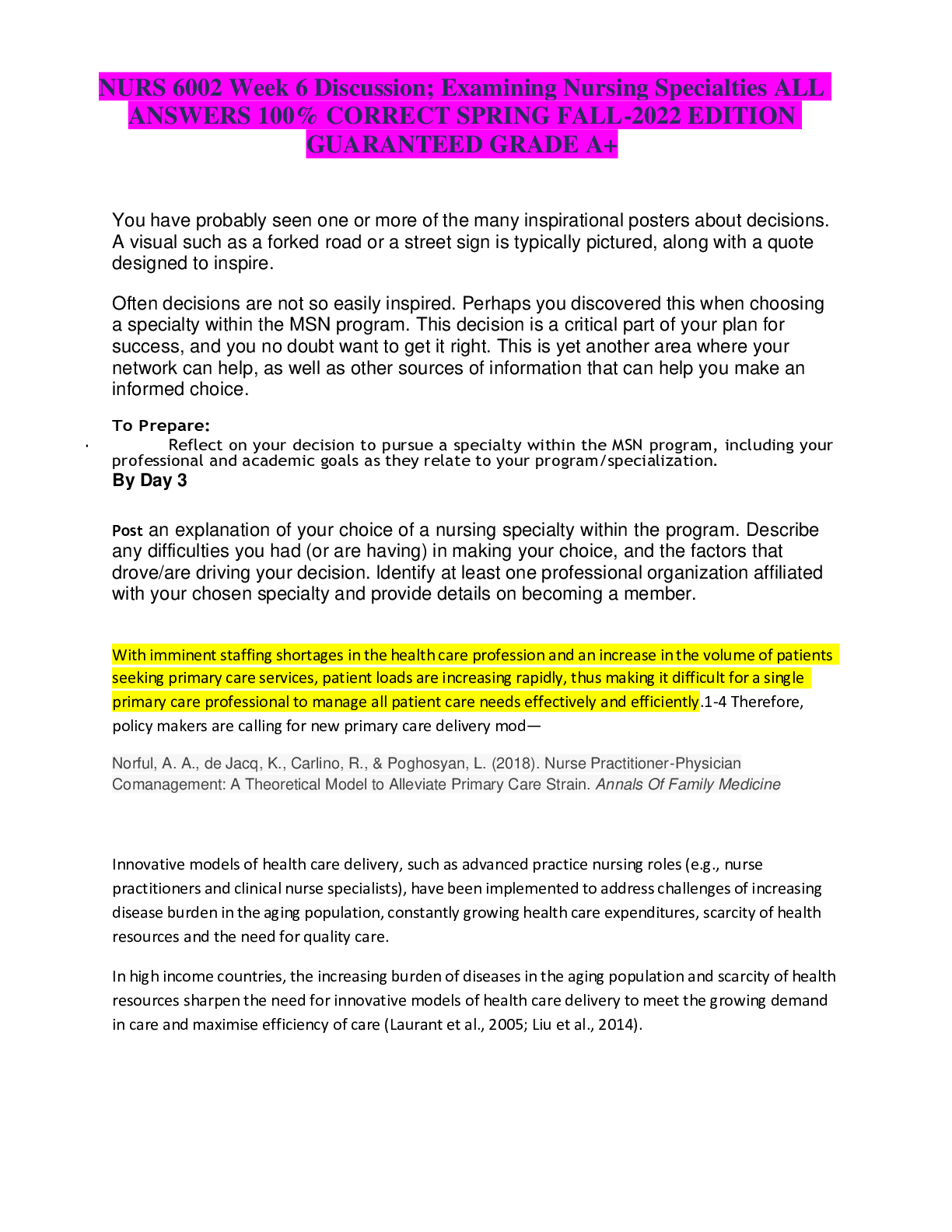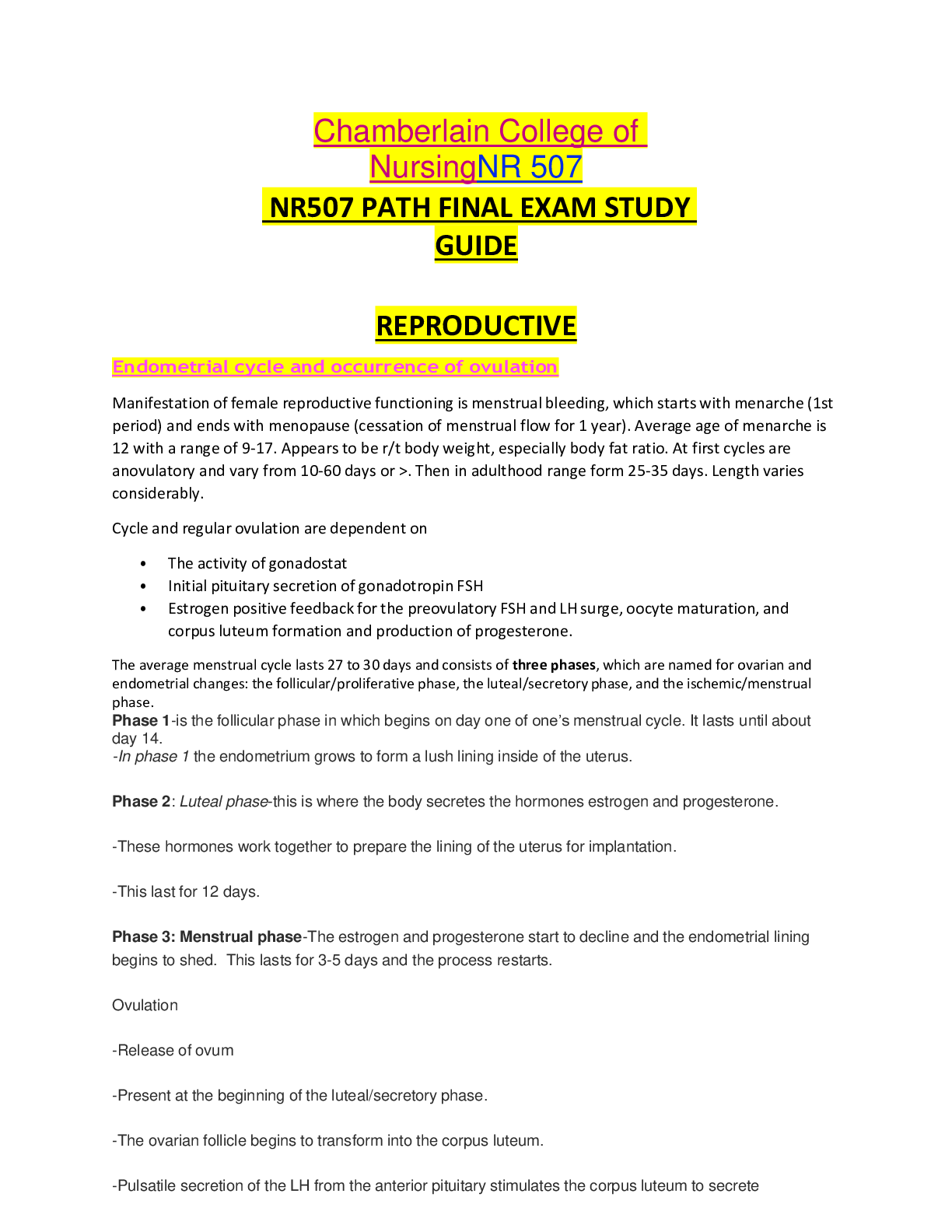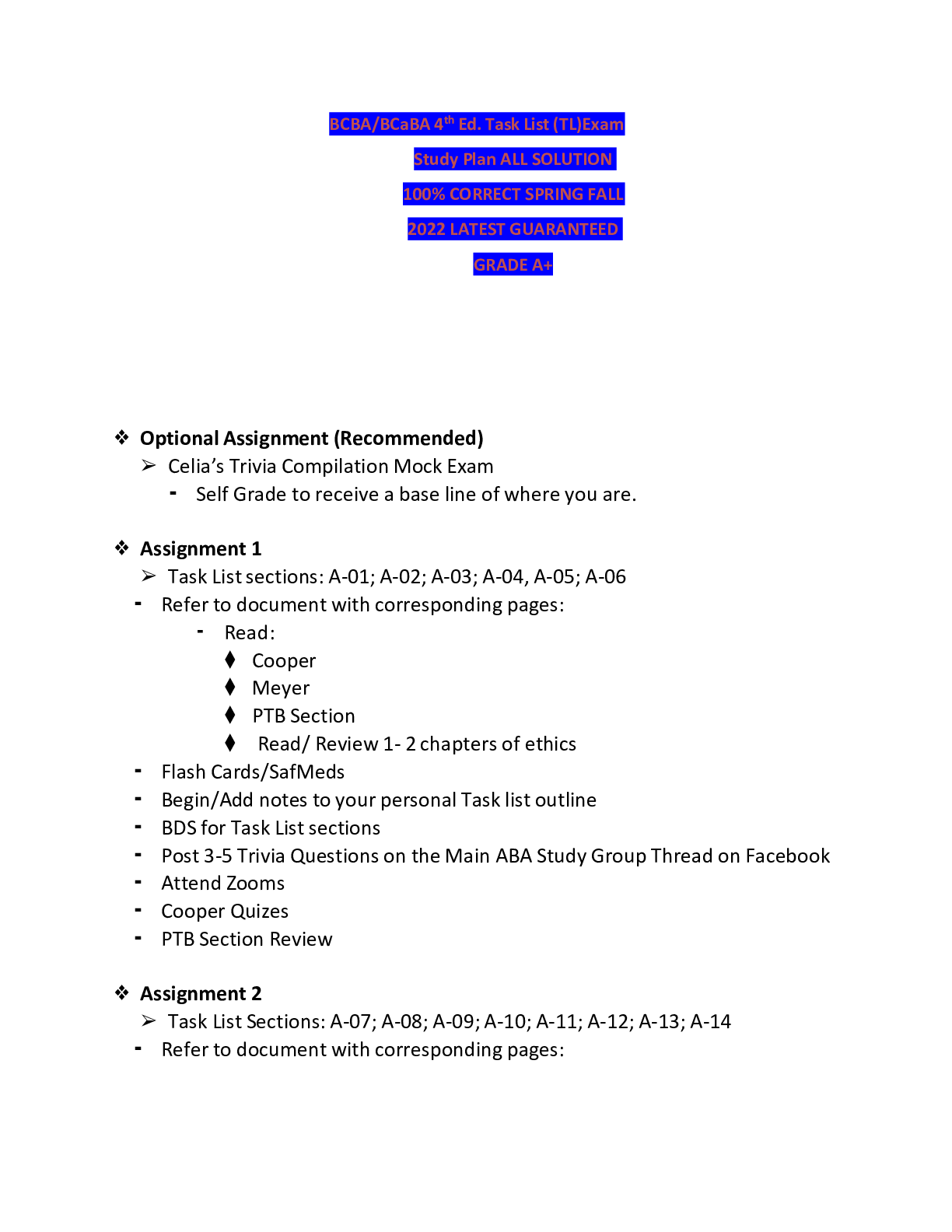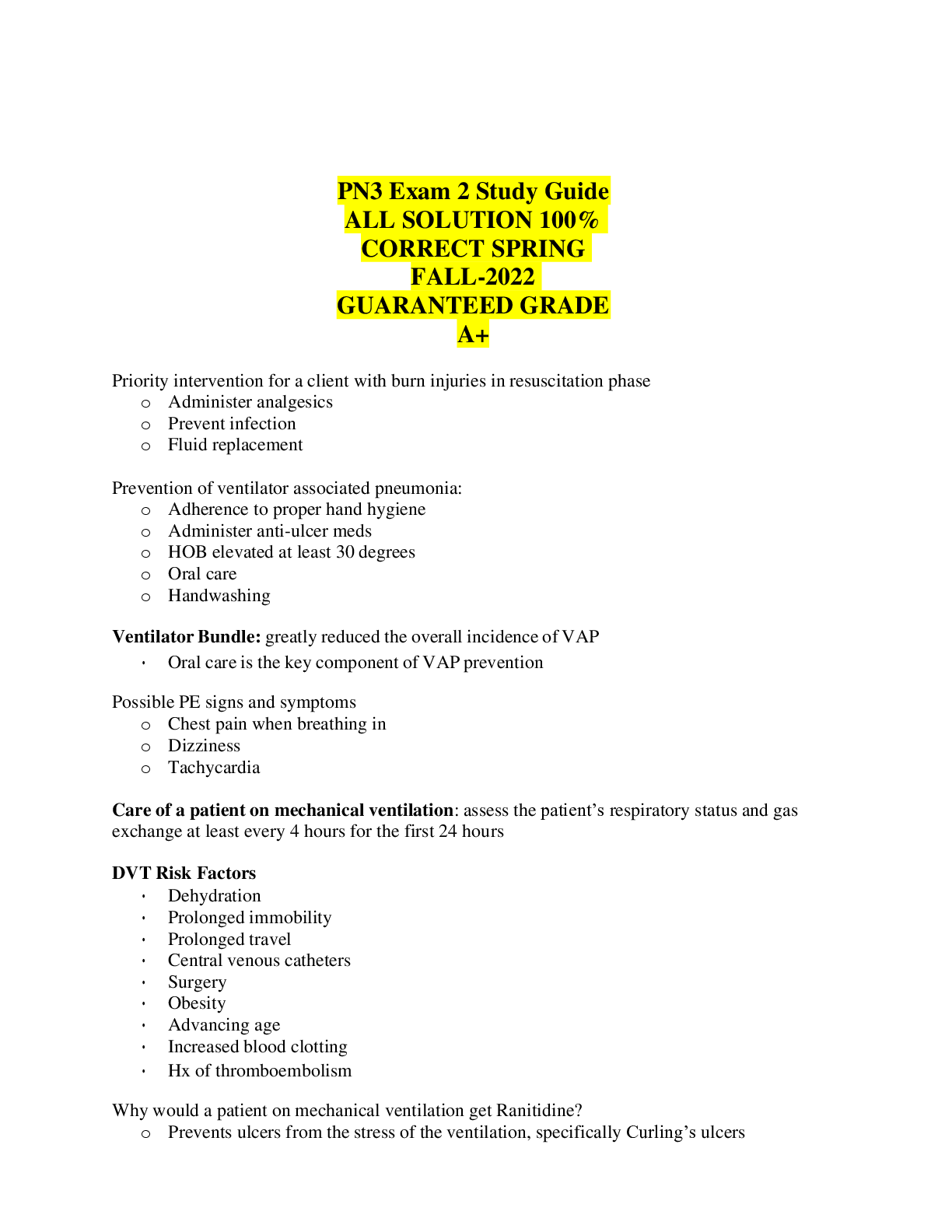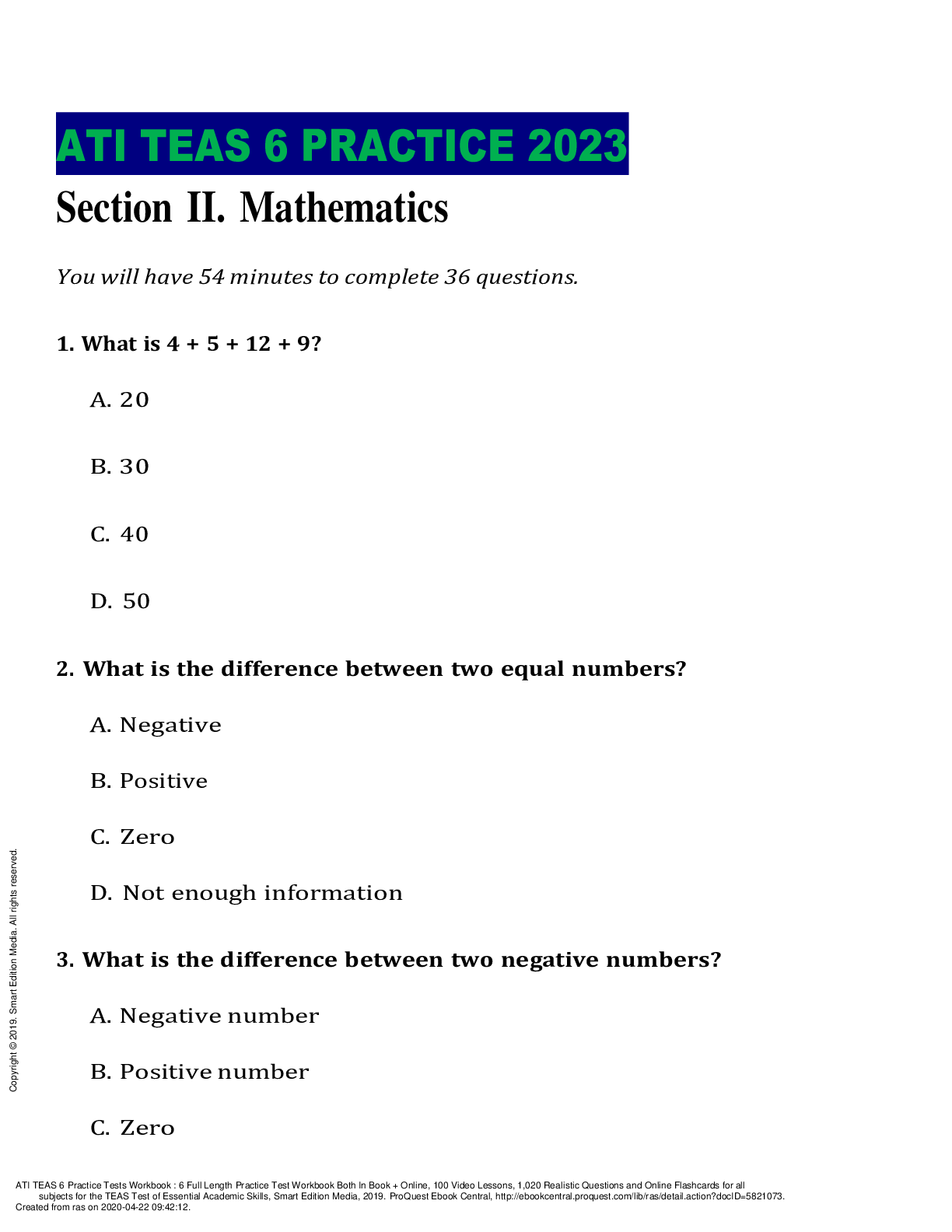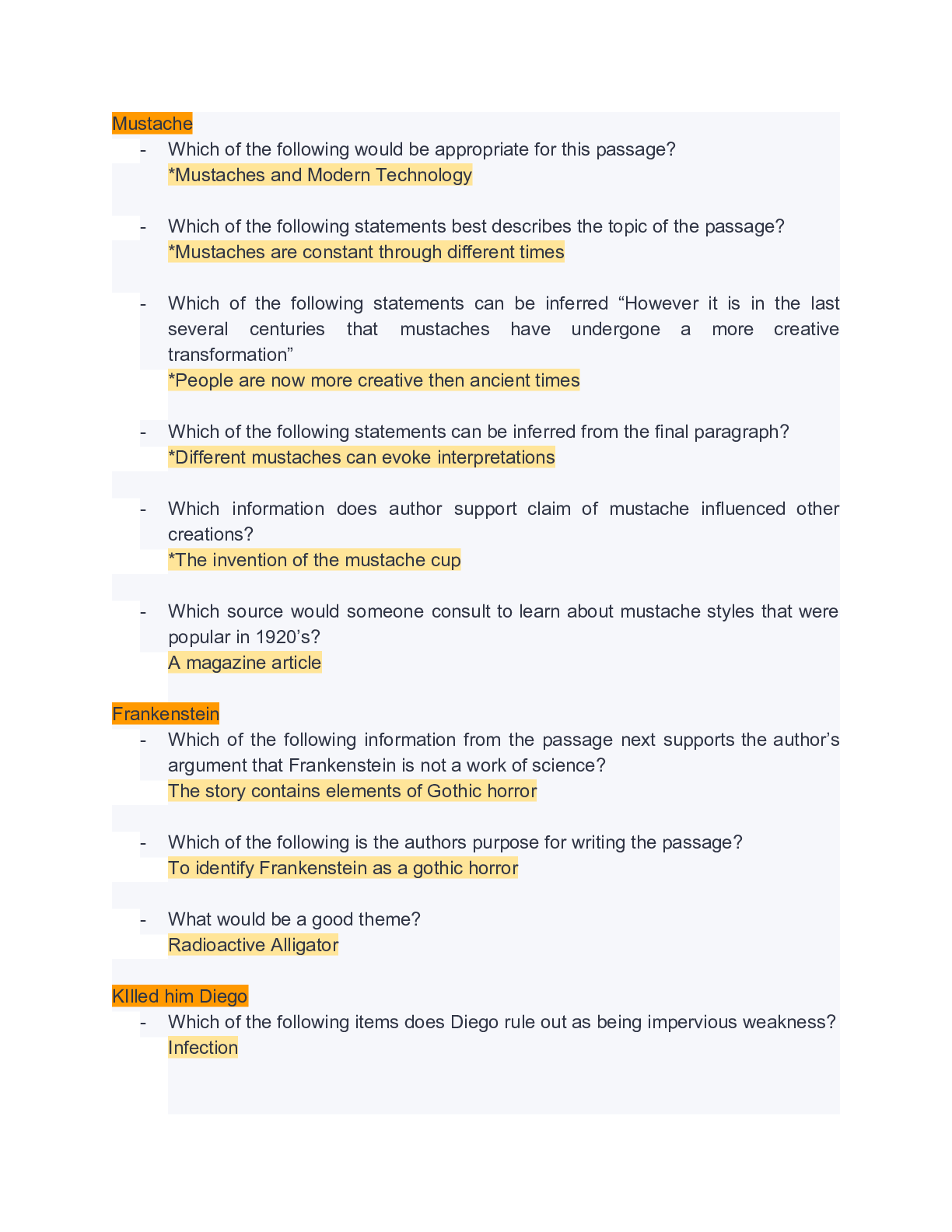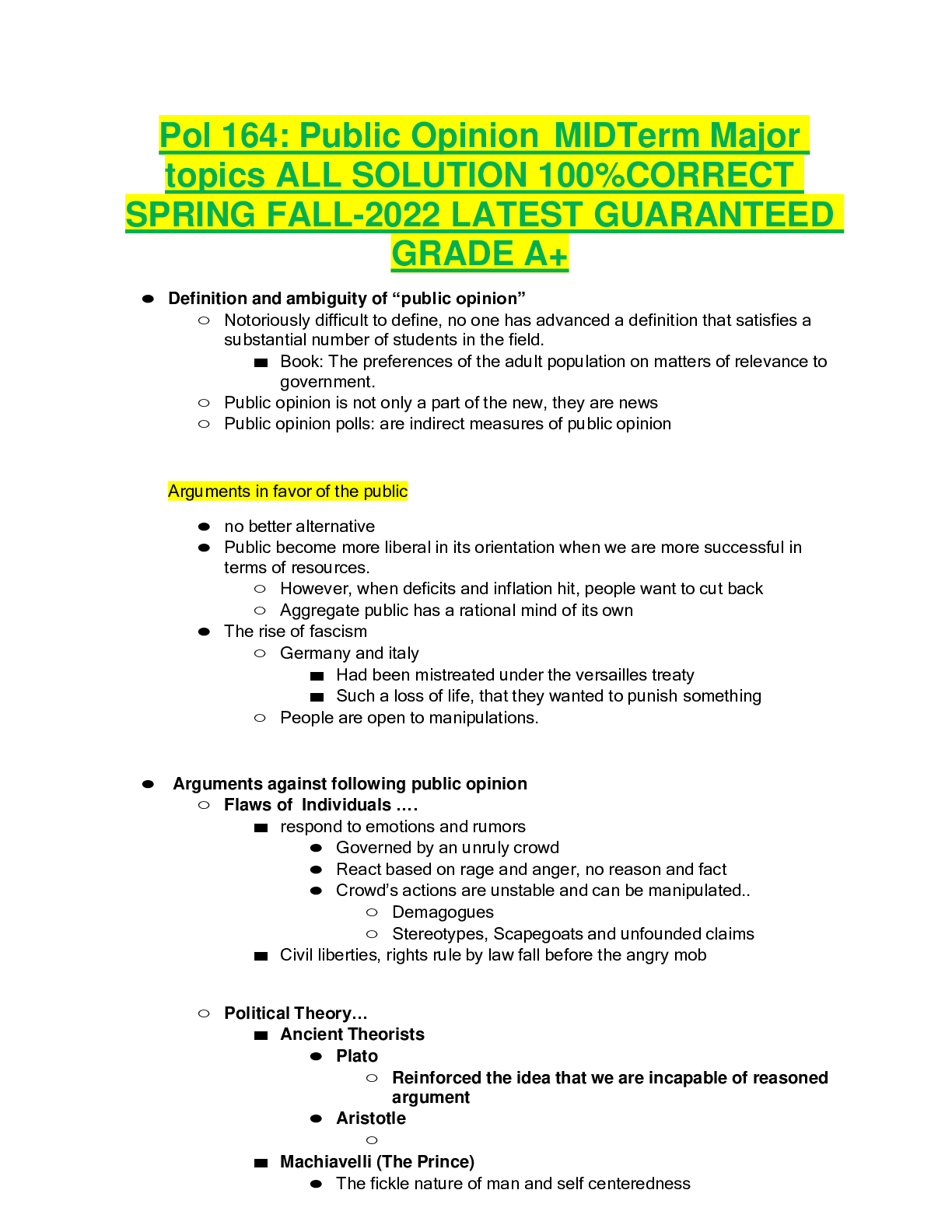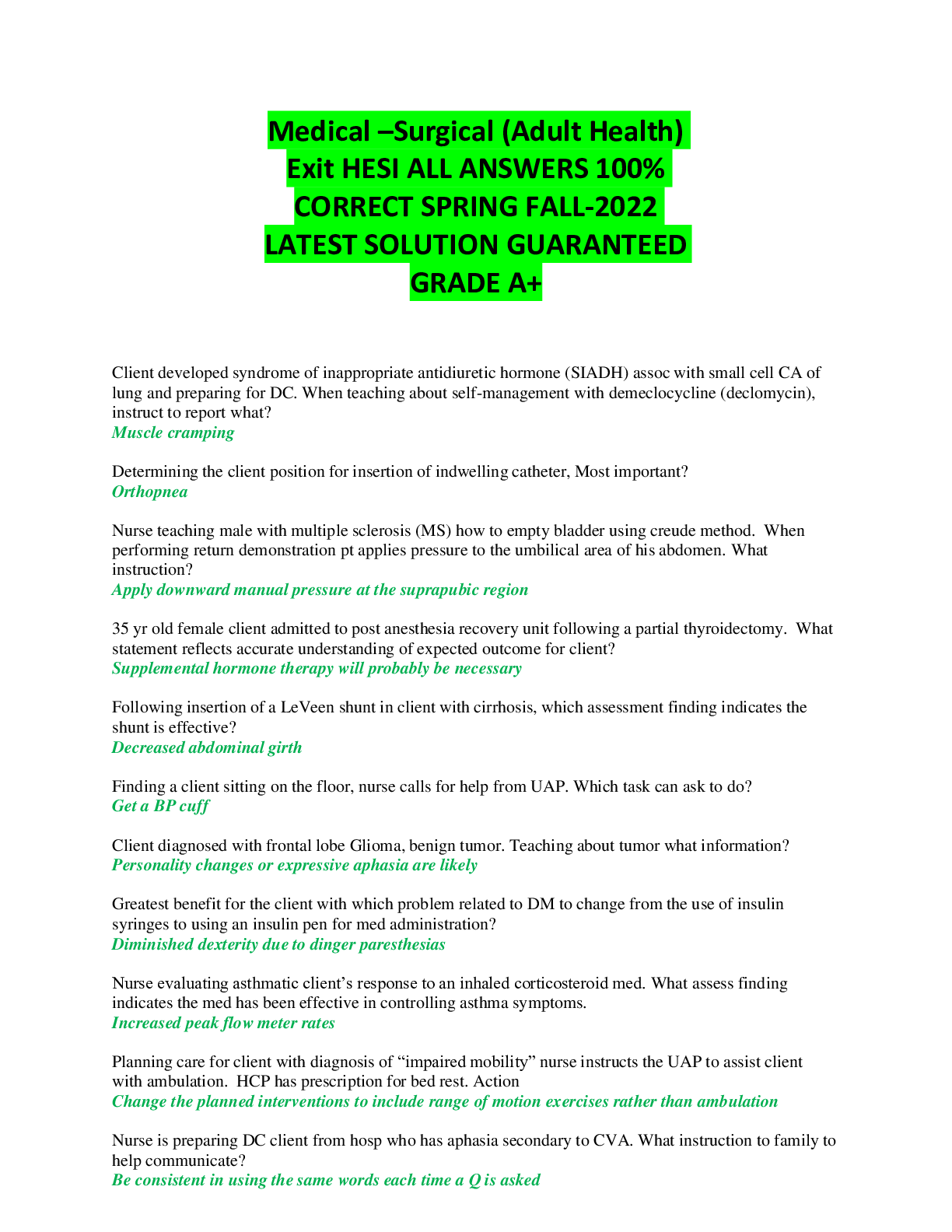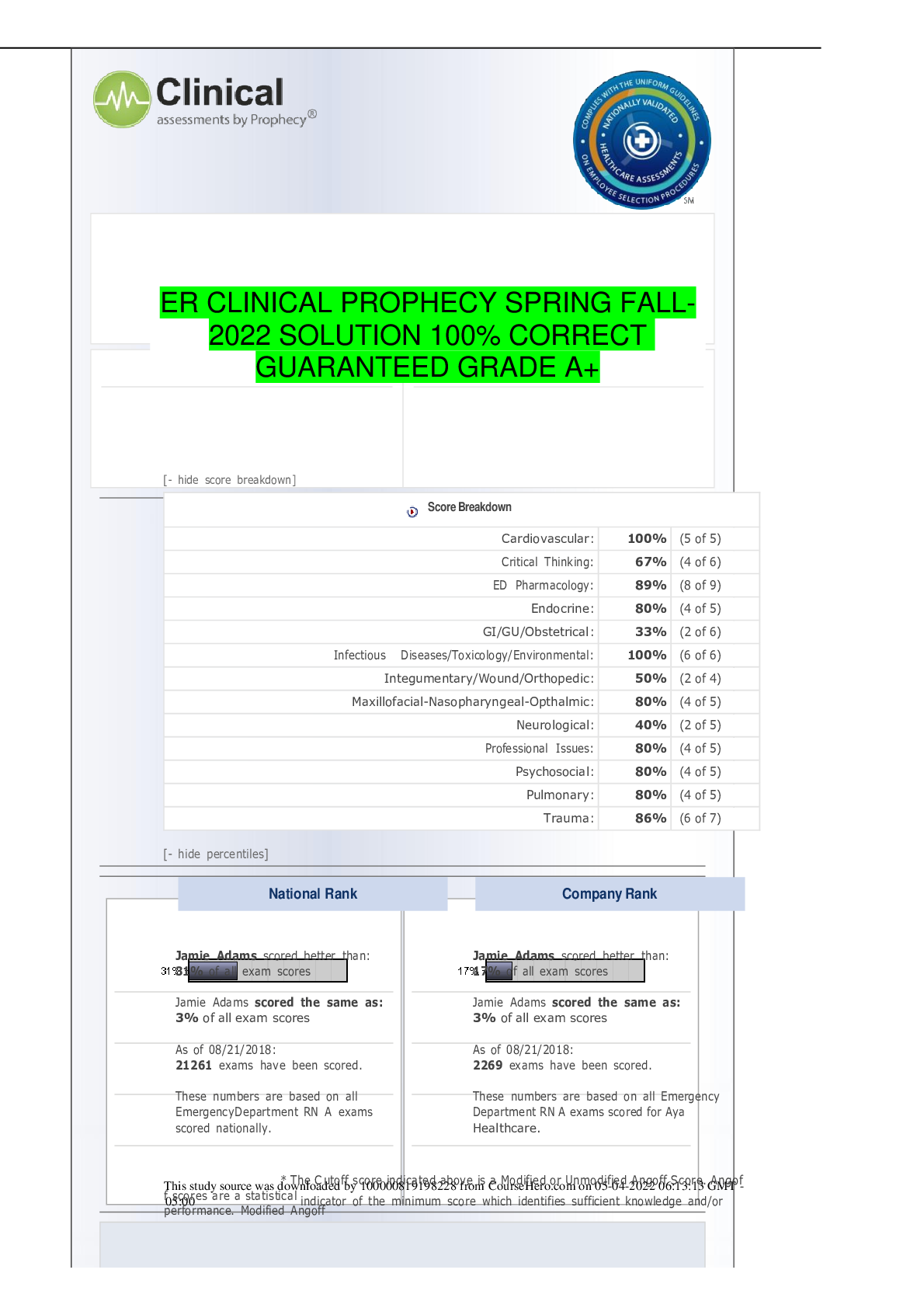*NURSING > STUDY GUIDE > i-Human Patient: Marvin F. Webster, Jr. - Reflection |complete solution guide, Spring 2020. 100% COR (All)
i-Human Patient: Marvin F. Webster, Jr. - Reflection |complete solution guide, Spring 2020. 100% CORRECT ANSWERS
Document Content and Description Below
Article Summary The first H1N1 flu diagnoses was made in April of 2009 (Jain et al, 2009). This article describes this particular strain of flu was unlike any strain of flu ever seen before. “The... 2009 H1N1 virus contained a unique combination of gene segments that had not previously been identified in humans or animals” (Jain et al, 2009, p. 1). The virus quickly spread to 191 countries and territories. This study goes on to evaluate the antiviral medication and the effects on 272 patients hospitalized. Of those hospitalized patients, twenty-five percent were admitted to the intensive care unit, seven percent died and forty-five percent of the patients were children under the age of 18 with five percent over the age of 65 (Jain et al, 2019). This study concluded patients who received the antiviral drug therapy before 48 hours of onset had a better outcome then those who started after 48 hours of symptom onset. “Data suggest that the use of antiviral drugs was beneficial in hospitalized patients, especially when such therapy was initiated early” (Jain et al, 2009, p. 3). It is essential that providers consider the flu in the patient’s differential diagnosis, if flu-like symptoms are present, and initiate antiviral therapy when a patient is hospitalized or has other health concerns such as asthma, COPD or even pregnancy (Jain, 2019). History Examination Rationale The questions asked during the patient encounter included questions regarding Marvin’s exposure and contact with other people having similar symptoms. Detecting who, when and where can sometimes help identify potential illnesses and mode of transmission. Questions regarding fever, chills, malaise, cough, arthralgias and myalgias are all relevant to signs and symptoms of the flu according to the CDC (2020). Determining Marvin’s cough and exhaustion came on suddenly can further narrow down his diagnosis. According to Papadakis et al (2019) a positive flu is suspected when a person has sudden onset symptoms of exhaustion and cough. It is suspected Marvin has the flu according to his reported symptoms. The CDC (2020) reports the flu is highly contagious and can be contagious for up to a day before a patient even shows symptoms. It is important to inquire about symptoms; weight loss, diarrhea, duration, fatigue and vaccine history to help aide in a differential diagnosis. Asking Marvin about his health history, prior flu vaccines and his social history can help further determine a diagnosis. Physical Exam Rationale A focused and systematic physical exam is one of the most vital components in diagnosing and treatment of a patient. Performing a head to toe assessment and vital signs can be crucial to identifying potential problems. Starting with Marvin’s baseline vitals and identifying his elevated temperature is indicative of an infection. While listening to Marvin’s heart, lungs and abdomen additional insight can be observed and palpated regarding his cardiac and gastrointestinal status. Playing close attention to auscultation of Marvin’s cough can better identify if the cough is in the upper or lower airways and can rule out asthma and wheezing which Marvin had as a child. It is important to rule out possible upper respiratory infections while examining the HEENT system. Marvin’s HEENT exam findings are negative. Bickley et al (2017) indicates auscultating lung sounds for fremitus, egophony or bronchophony can aide in the determining a differential diagnosis. Often times influenza can cause stomach pain leading to diarrhea which would be found with hyperactive bowel sounds. Marvin’s bowel sounds upon palpation and auscultation are however negative. Case Evaluation My overall case evaluation revealed areas of growth and opportunity to improve my assessment and physical exam skills. It is important to follow the head to toe approach to be consistent and to not skip or repeat exams and interview questions. Ensuring to include severity of chief complaint following the POLDCARTS acronym during the HPI. Not to forget to go further in my assessment and ask questions pertaining to the patient’s sore throat such as severity, timing, and what makes is better or worse. Other assessments missed include questions regarding wheezing, severity and related problems such as difficulty sleeping, dizziness or seizures. Overall, I need to practice simulation exercises to become more proficient and specific to the body systems involved for diagnostic and treatment purposes. I was happy to see I had the same [Show More]
Last updated: 1 year ago
Preview 1 out of 6 pages
Instant download
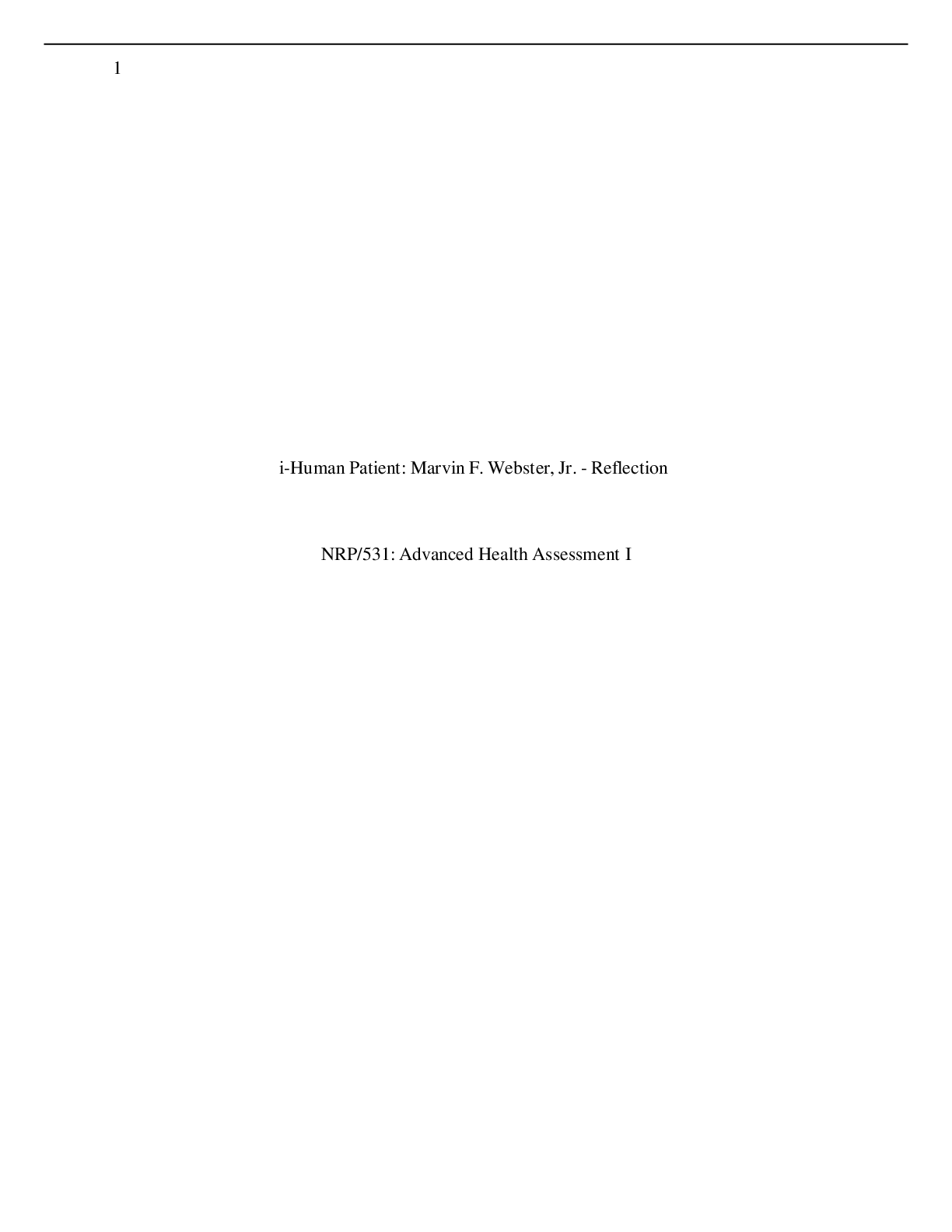
Buy this document to get the full access instantly
Instant Download Access after purchase
Add to cartInstant download
Reviews( 0 )
Document information
Connected school, study & course
About the document
Uploaded On
Apr 07, 2021
Number of pages
6
Written in
Additional information
This document has been written for:
Uploaded
Apr 07, 2021
Downloads
1
Views
52

